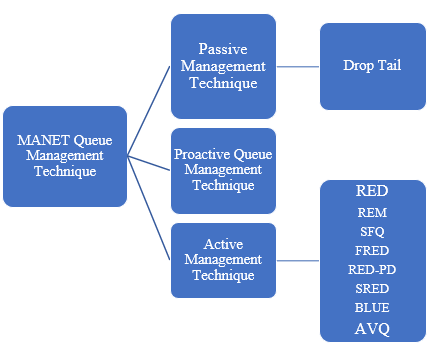Intelligent Buffer Management Algorithm to Prevent Packet loss in Mobile Adhoc Network
Main Article Content
Abstract
In a mobile ad hoc network, which is self-organized and operates without any fundamental infrastructure, packet transmission from the source node to the destination node is completed after sending the route request and route reply. A reliable path is then selected depending on the protocol choice. Data that the sender intends to deliver is broken up into packets and given sequence numbers before being transmitted over the channel. With the aid of an internal buffer that helps to receive packets and forward them to the next destination, each and every packet travels along the allotted path until it reaches its destination. If there is more traffic on the MANET, the buffer may overflow, which will result in packet loss during transmission.. The source node must retransmit to the destination if any packets were lost during the initial transfer. This article proposes the Intelligent Buffer Management (IBM) active buffer management algorithm to prevent such a scenario by enhancing the MANET nodes' buffers to prevent packet loss. The Network Simulator is used to help build this suggested approach, and the results are compared to those of the current buffer management method to show that IBM is superior.
Article Details
References
B.Purushotham, Dr.Ch.D.V Subba Rao " Buffer Management Schemes to avoid Packet Loss in Mobile Ad-hoc Networks: A Survey" International Journal for Research in Engineering Application & Management (IJREAM) ISSN : 2454-9150 Vol-05, Issue-02, May 2019.
P. G. Kulkarni, S. I. McClean, G. P. Parr, and M. M. Black, Proactive predictive queue management for improved QoS in IP networks, in Proc. IEEE ICN/ICONS/MCL 2006, 2006.
V. Friderikos and A. H. Aghvami, Hop based queueing (HBQ): An active queue management technique for multihop wireless networks, in Proc. IEEE ICICS/PCM 2003, 2003, pp. 1081-1085.
Gaikwad, S. Y. ., & Bombade, B. R. . (2023). Energy Enhancement in Wireless Sensor Network Using Teaching Learning based Optimization Algorithm. International Journal of Intelligent Systems and Applications in Engineering, 11(2s), 52–60. Retrieved from https://ijisae.org/index.php/IJISAE/article/view/2507
J. Lutz, C. J. Colbourn, and V. R. Syrotiuk, Variable weight sequences for adaptive scheduled access in MANETs, in Sequences and Their Applications ( SETA) 2012 T. pp 53–64 . https://link.springer.com/chapter/10.1007/978-3-642-30615-0_5
S. Chen and B. Bensaou, Can high-speed networks survive with DropTail queues management? Comput. Netw., vol. 51, no. 7, pp. 1763-1776, 2007.
B. Abbasov and S. Korukoglu, Effective RED: An algorithm to improve RED’s performance by reducing packet loss rate, J. Netw. Comput. Appl., vol. 32, no. 3, pp. 703-709, 2009.
S. Dimitriou and V. Tsaoussidis, Promoting effective service differentiation with size-oriented queue management, Comput. Network ., vol. 54, no. 18, pp. 3360- 3372, 2010.
Muhammed Aamir, Mustafa A.Zaidi, “A Buffer Management Scheme for Packet Queues in MANET ,”Tsinghua Science and Technology vol.18, Number: 6 , pp543-553 , Dec 2013.
Lin, D. and Morris, R. 1997. Dynamics of Random Early Detection, In Proceedings of ACM Sigcomm. Cannes, France, pp. 127-137.
P. T. Mahida, “A Comparative Analysis of Queue Management Techniques using NS-2 Simulator,” vol. 65, no. 6, pp. 2–5, 2013.
S. Rastogi and S. Srivastava, “Comparison Analysis of Different Queuing Mechanisms Droptail , RED and NLRED in Dumbbell Topology,” vol. 3, no. 4, pp. 3–5, 2014.

